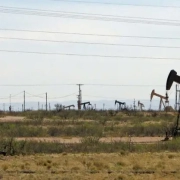⚠️ IMPORTANT LEGAL DISCLAIMER:
The information provided on this page is for general informational purposes only and does not constitute legal, financial, or investment advice. Oil and gas laws, mineral rights regulations, and royalty structures vary significantly by state and jurisdiction. While we strive to provide accurate and up-to-date information, no guarantee is made to that effect, and laws may have changed since publication.
You should consult with a licensed attorney specializing in oil and gas law in your jurisdiction, a qualified financial advisor, or other appropriate professionals before making any decisions based on this material. Neither the author nor the publisher assumes any liability for actions taken in reliance upon the information contained herein.
The global oil and gas industry is a complex, multi-trillion-dollar sector that is continually evolving in response to economic, environmental, and geopolitical factors. One of the most significant cost considerations in oil and gas production is the payment of royalties. Resource owners, usually governments, receive royalties as payments based on the revenue generated from extracted oil and gas. However, in some regions around the world, producers can operate in designated royalty-free zones where they are exempt from these payments. These zones have emerged as attractive destinations for oil and gas companies looking to minimize production costs and maximize profits.
In this comprehensive article, we explore the concept of royalty-free zones, examine where they exist, discuss the economic and strategic motivations behind their creation, and analyze their impact on global oil and gas markets. By understanding these zones, stakeholders can better assess investment opportunities, operational efficiencies, and long-term planning strategies.
Understanding the Concept of Royalty-Free Zones
Royalty-free zones are designated geographic areas where oil and gas producers are not required to pay royalties to the landowner or government. These zones are typically created by national or regional authorities to incentivize exploration and development in underdeveloped or high-risk areas. The elimination of royalty payments significantly reduces the cost of production, making these zones highly attractive for both new and existing players in the energy sector.
Such exemptions are usually time-bound or conditional on specific production milestones. They may be part of broader fiscal regimes that include tax holidays, reduced corporate tax rates, or other financial incentives. The overarching goal is to make resource extraction more economically viable, especially in regions that are logistically challenging or politically unstable.
Key Locations Around the World
Several countries have established royalty-free or low-royalty zones to stimulate investment in their oil and gas sectors. While the exact policies vary by jurisdiction, the common denominator is the strategic aim of enhancing competitiveness and attracting foreign direct investment.
In Latin America, for instance, countries like Colombia and Brazil have introduced special regimes in remote or offshore areas. These programs are designed to offset high development costs and infrastructure limitations. Similarly, in parts of Africa, such as Angola and Mozambique, royalty-free arrangements are used to attract multinational companies to frontier regions that lack exploration history.
The Middle East, traditionally known for its abundant hydrocarbon reserves, also features specific zones where royalty obligations are minimized. This is particularly evident in free trade zones or special economic zones established within the Gulf Cooperation Council countries.
In North America, particularly in the United States, certain federal lands and offshore areas offer favorable leasing terms that may include reduced royalty rates under specific conditions. Though not entirely royalty-free, these arrangements significantly lower operational costs.
Economic Drivers Behind Royalty-Free Zones
The establishment of royalty-free zones is often driven by economic imperatives. Governments use these zones as tools to:
- Stimulate exploration in underdeveloped regions
- Encourage foreign investment
- Accelerate job creation and infrastructure development
- Enhance energy security
For oil and gas companies, the appeal lies in the opportunity to boost profit margins. By removing or reducing royalty obligations, operators can allocate more capital to advanced technologies, safety protocols, and environmental safeguards, ultimately increasing overall project viability.
In some cases, royalty-free zones are introduced as part of broader economic reform packages, especially in countries seeking to diversify their economies or transition from state-controlled to market-driven systems. The presence of these zones often correlates with liberalized markets and pro-business regulatory environments.
Strategic Considerations for Companies
Operating in royalty-free zones is not without its strategic considerations. While the financial incentives are substantial, companies must also weigh the following factors:
- Political stability: Many royalty-free zones are located in geopolitically sensitive areas. Companies must conduct thorough risk assessments.
- Regulatory compliance: Despite relaxed fiscal terms, environmental and safety regulations may still be stringent.
- Infrastructure: Remote areas may lack the necessary infrastructure for efficient production and transport.
- Community engagement: Operators must ensure responsible social practices to maintain a license to operate.
Strategic partnerships with local firms or government entities are often essential to navigate these complexities successfully.
Technological Advancements and Cost Reduction
The availability of royalty-free zones has coincided with significant technological advancements in the oil and gas sector. Innovations such as horizontal drilling, seismic imaging, and enhanced oil recovery methods have made it feasible to extract hydrocarbons from previously uneconomical reservoirs. When combined with the cost savings from royalty exemptions, these technologies significantly improve the return on investment.
Moreover, digital technologies like artificial intelligence and big data analytics are optimizing exploration and production activities, allowing for more precise resource targeting and efficient field management. Companies can reinvest the cost savings from royalty-free zones into cutting-edge technologies, further driving operational excellence.
Environmental and Social Impacts
The reduction or elimination of royalties does raise important environmental and social questions. Critics argue that royalty-free zones can lead to over-exploitation of resources, insufficient revenue for local communities, and lax oversight. Governments must strike a balance between incentivizing investment and ensuring sustainable resource management.
To mitigate these risks, some jurisdictions require companies operating in royalty-free zones to contribute to community development funds, adhere to strict environmental standards, or invest in renewable energy projects. These additional obligations aim to offset the loss of royalty revenue and ensure that local populations benefit from resource extraction activities.
Global Market Implications
Royalty-free zones have the potential to reshape global oil and gas markets by influencing supply dynamics, pricing strategies, and competitive landscapes. By lowering the cost base, producers in these zones can remain profitable even when global oil prices are low. This can lead to increased production levels and market share, especially during downturns.
On the flip side, a surge in low-cost production from royalty-free zones can contribute to oversupply, placing downward pressure on prices and affecting producers in higher-cost jurisdictions. This dynamic reinforces the importance of strategic planning and market analysis for both governments and companies.
Investment Trends and Future Outlook
Experts expect that investment in royalty-free zones will grow, especially as global demand for energy continues to rise and new frontiers become accessible. Emerging markets in Africa, Southeast Asia, and Latin America are likely to be at the forefront of this trend, driven by both resource potential and proactive government policies.
As the energy transition accelerates, stakeholders are showing growing interest in how to adapt royalty-free frameworks to include low-carbon energy sources such as hydrogen, geothermal, and biofuels. Policymakers are exploring ways to replicate the success of hydrocarbon-based royalty-free zones in the context of cleaner energy alternatives.
The long-term viability of these zones will depend on a balanced approach that considers economic, environmental, and social dimensions. Transparent governance, robust legal frameworks, and effective stakeholder engagement will be crucial in ensuring that royalty-free zones contribute positively to sustainable development goals.
Royalty-free zones represent a strategic tool for lowering oil and gas production costs and attracting investment. While they offer significant economic benefits, they also require careful management to avoid potential downsides. As global energy dynamics continue to evolve, these zones will play an increasingly important role in shaping the future of oil and gas exploration and production.
Understanding where these zones exist, why they establish them, and how they function provides valuable insights for investors, policymakers, and industry professionals alike. In an era marked by uncertainty and transformation, royalty-free zones stand out as a critical factor influencing the economics of energy production.











